Join More Than 50,000+ Subscribers and get latest camera news and rumors
NEW CAMERA VIDEOS ON YOUTUBE
|
By admin, on April 18th, 2025
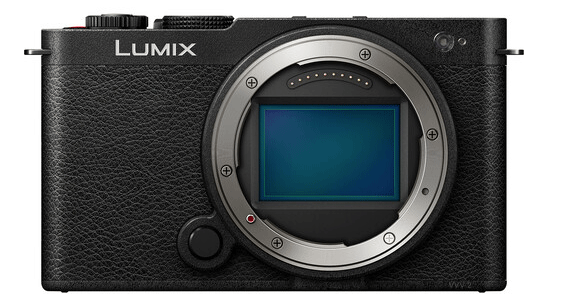
Panasonic has started distributing firmware update Ver.1.4 for the ” LUMIX S9 “. It appears to fix some bugs and be a minor update.
- Fixed a problem where some settings would revert to the default settings after updating the firmware to Ver.1.3.
- Fixed a bug in recording gain settings.
- Fixed an issue where the password authentication prompt would not appear when connecting to Wi-Fi.
Improved operational stability.
Panasonic S9 is selected as the best content creator camera by TIPA., The camera, after the V1.1 update, has become one of the best cameras for professionals.
Click here to download the update
By admin, on April 18th, 2025
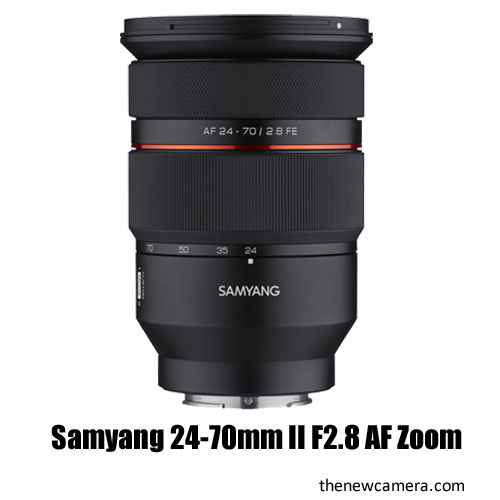
Samyang 24-70mm F2.8 Mark II AF Zoom in Announcement Pipeline – Samyang 24-70 Mark II for E-Mount ( 2nd edition ) is about to arrive according to the latest and confirmed information we have, but what we are expecting right now is that the earlier version or some of the lenses of 24-70 F2.8 series were having some design issues. I hope this time they will fix it, and none of the users will have to face such an issue.
Stay tuned for more updates coming soon…
Follow us on our social pages FACEBOOK | TWITTER | INSTAGRAM to get live Camera News +
By admin, on April 18th, 2025
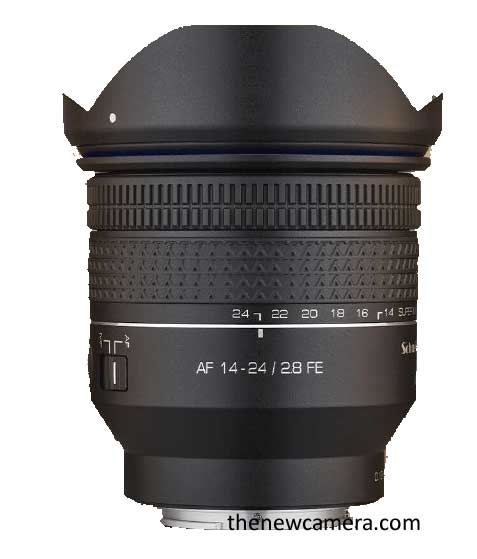
Samyang announced AF 14-24mm f/2.8 lens for Sony E-mount, although the official announcement / formal press release based announcement will be done on April 25, 2024.
The lens weighs only 445 grams and supports 77mm circular filters, so it is lightweight, convenient, easy to carry, and one of the most important things is that they have upscaled the autofocus performance of the lens compared to their previous generation of lenses. The price of the lens is expected to be around 1100 USD.
You can check early pre-order links on this website for the B&H Store and at Adorama.com.
Follow us on our social pages FACEBOOK | TWITTER | INSTAGRAM to get live Camera News +
This page will be updated soon with more information
By admin, on April 16th, 2025
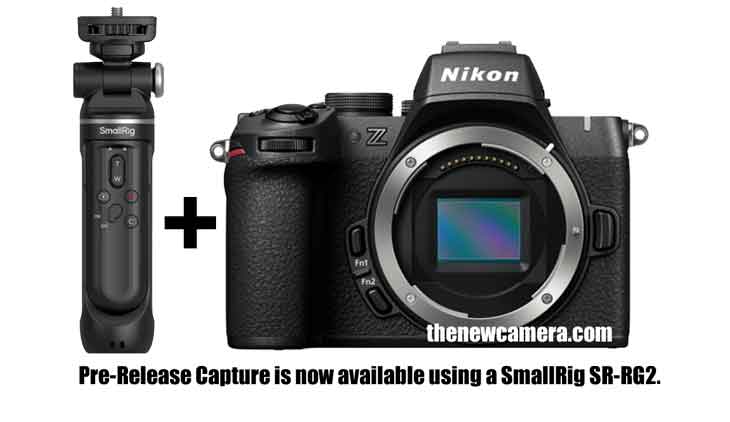
We all know that the Nikon Z50 II does have pre-release capture mode, but it doesn’t work well when you use the remote shutter of the Small Rig SR-RG2 Grip. Now with the latest update, Nikon now fixed the issue, and it will work in High Speed Frame Capture + Mode when paired with the SmallRig SR-RG2 Grip
Nikon Z50 II Firmware Update – Changes from “C” Firmware Version 1.00 to 1.01
- • Pre-Release Capture is now available using a SmallRig SR-RG2.
- • Added “русский” (Russian) to [Language] in [SETUP MENU] for Z50II cameras sold in the Middle East region.
- • Renamed d13 [Display on during burst] in [CUSTOM SETTINGS MENU].
- • Fixed the following issues.
- – In rare cases, the camera would stop responding when the camera was reconnected to SnapBridge after it was connected to Nikon Imaging Cloud while connecting to SnapBridge.
- – In synchronized release, pressing the shutter-release button of the master camera halfway initiated autofocus on the remote camera with the following setting selected.
- ▸ [CUSTOM SETTINGS MENU] > a6 [AF activation] > [AF-ON only]
Click here to download the update.
Follow us on our social pages FACEBOOK | TWITTER | INSTAGRAMto get live Camera News +Nikon Rumors 24X7
By admin, on April 16th, 2025
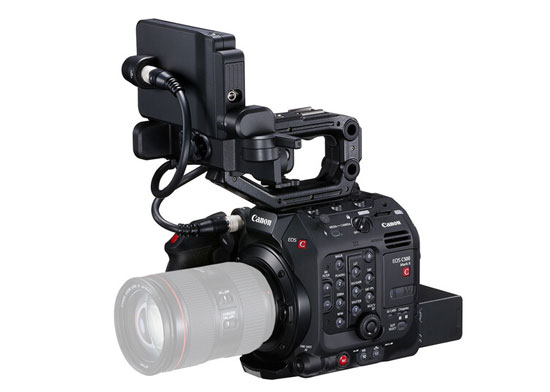
Canon C500 – The Canon cinema camera has a usable firmware update this time – Take a look at the list of improvements, if ur an owner and feel it’s important to have it, then only apply the updates
- Enables the digital tele-converter icon display on [Main Recording Displays] of [DISP Level 2].
- It adds the ability to apply a full-screen display to an external display according to the OSD output setting when using [Peripheral Border Display].
- Adds the [Motion Vector For Digital IS] menu option. Default [Disable]*.
*[Disable]: Prevents a phenomenon that may cause the image to shake along with the subject when recording a subject (such as a person or an animal) with a large amount of movement.
- Fixes minor issues.
- Fixes an issue in which aspect markers and other markers are not displayed correctly if the resolution of the video output configuration is set to [4192x3140 (4:3)] or [3768x3140 (6:5)] and the anamorphic desqueeze is applied.
Click here to download Canon C500 update

Sony A1 II, A1, and A9 III – Sony released a new firmware that includes minor bug fixes and a little bit of performance improvement. If you find them useful, then you can update it; otherwise, it isn’t a major performance-enhancing update
A1II Benefits and Improvements – Click here to download
- Fixes an issue where setting Recording Media to Sort Recording may cause a restart during still image capture
- Fixes an issue where the effectiveness of the Soft Skin Effect when recording movies in S-Log3 was not properly adjusted
A9III Benefits and Improvements – Click here to download
- Fixes an issue where setting Recording Media to Sort Recording may cause a restart during still image capture
- Fixes an issue where the effectiveness of the Soft Skin Effect when recording movies in S-Log3 was not properly adjusted
A1 Benefits and Improvements – Click here to download
- Fixes an issue where setting Recording Media to Sort Recording may cause a restart during still image capture
- Fixes an issue where the button registered with Recall Custom Hold may not be accepted
Follow us on our social pages FACEBOOK | TWITTER | INSTAGRAM to get live Camera News +
By admin, on April 15th, 2025
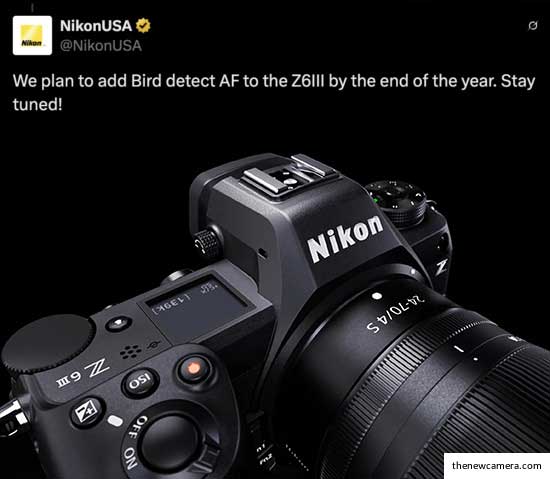
Today Nikon confirmed that bird eye autofocus mode is coming to the Nikon Z6 Mark III camera later this year in their social media post, that’s really great news since cameras like Nikon Z50 II, Z5II and Nikon Zf, which come at a lower price point than the Nikon Z6 III, now have bird eye autofocus mode. And Z6 III users are waiting for a long time to have it.
And we had reported back in November 2024 that Nikon is working on Z6 Mark 3 bird eye autofocus mode and they will roll it out as they are ready for it, and now we got the final confirmation from Nikon itself.
Best Lenses for Nikon Z6 III
Follow us on our social pages FACEBOOK | TWITTER | INSTAGRAMto get live Camera News +Nikon Rumors 24X7
By admin, on April 15th, 2025

Nikon Z5 II vs Sony A7 III – Let’s compare the two and find out the best, we have selected all the major difference between the two camera, starting from the desing part, and the the Major differences in the photography part of both camera,s and finally, the best camera for video.
In the Latest Nikon Z5 II, we have a deep rear hand grip and an enhanced display as well as an electronic viewfinder. The rear display screen in the Nikon Z5 II is a vari-angle display screen with higher resolution, so you can also create content/vlog with the camera, and photographers will have a bit more compositional freedom. The electronic viewfinder is of higher resolution and rated up to 3000 nits of brightness, helping to shoot perfectly in daylight conditions. The Nikon Z5 II design is slightly more professional and looks very similar to the Nikon professional Z6 III model. The battery life of the Nikon Z5 II is slightly limited so you have to carry an extra battery pack or a power bank with you.
| Aspect |
Nikon Z5 II |
Sony A7 III |
| Body Dimensions |
134 x 100.5 x 72 mm (Large handgrip) |
127 x 96 x 74 mm (Slightly small) |
| Weight |
700g (with battery, media) |
650g (with battery) |
| Grip & Ergonomics |
Larger, deeper grip with still/video switch, tactile dials |
Smaller grip, more custom buttons, compact layout |
| Build & Weather Sealing |
Magnesium alloy, weather-sealed (32 to 104°F, 85% humidity) |
Magnesium alloy, dust/moisture resistant (tropicalization) |
| Card Slots |
Dual UHS-II SD/SDHC/SDXC slots |
One UHS-II + one UHS-I SD slot |
| Display Size |
3.2-inch touchscreen |
3.0-inch touchscreen |
| Display Resolution |
2,100,000 dots |
921,600 dots |
| Display Type |
3-way tilting (up/down/side) vari-angle |
2-way tilting (up/down) |
| Touchscreen Functionality |
Full control (menus, focus, zoom) |
Limited (focus point, double-tap zoom) |
| Viewfinder Type |
Electronic OLED |
Electronic OLED |
| Viewfinder Resolution |
3,690,000 dots |
2,359,296 dots |
| Viewfinder Magnification |
0.8x |
0.78x |
| Viewfinder Eye Point |
21 mm |
23 mm |
| Battery |
1x EN-EL15c Lithium-Ion (~380 shots CIPA) |
1x NP-FZ100 Lithium-Ion (~610 shots CIPA) |
| Power Delivery |
USB-C input/output (live power during shooting) |
USB 3.1 (charging only) |
| Video I/O |
Micro-HDMI output |
Mini-HDMI output |
| Audio I/O |
3.5mm headphone, 3.5mm microphone |
3.5mm headphone, 3.5mm microphone |
| Other I/O |
3.5mm remote, USB-C 3.2/3.1 Gen 1 (data/power) and Multi-interface shoe |
Multi-interface shoe (remote/audio), USB 3.1 (data) |
| Wireless Connectivity |
2.4/5 GHz Wi-Fi 5 (802.11ac), Bluetooth 5.0 |
2.4 GHz Wi-Fi (802.11b/g/n), Bluetooth 4.1 |
| NFC |
None |
Included |
| Mobile App |
SnapBridge (Android/iOS, files/firmware/remote) |
Imaging Edge Mobile (Android/iOS, files/remote) |
| GPS |
Via smartphone (SnapBridge) |
Via smartphone (Imaging Edge) |

Internal Core specification of the camera
Both cameras use a 24-megapixel full-frame BSI CMOS sensor, but the Nikon Z5 II, with the help of new image processor features, has a standard ISO range of up to 64000 and expandable up to 204800, which is one stop more than that of the Sony A7 III.
Not only does it have a better ISO range, but the new Z5 II camera also uses a sensor-shift image stabilisation system of 7.5 stops. As we know, the A7 III is limited to 5 stops, so Z5 II will be helping you a bit more to capture low-light images while hand-holding this camera.
Adding more value to it, the autofocus sensitivity now can touch down to minus 10 EV, and in Sony, it is limited to minus 3. So, we consider all these factors — the Z5 II becomes a bit more suitable a camera to work with under variable light conditions.
Nikon Z5 II vs Sony A7 III – Photography Core Specs Comparison
| Aspect |
Nikon Z5 II |
Sony A7 III |
| Sensor Type |
24.5MP full-frame CMOS (6048 x 4032) |
24.2MP full-frame BSI CMOS |
| Sensor Crop |
1.0x (full-frame) |
1.0x (full-frame) |
| Image Stabilization |
5-axis sensor-shift IBIS(7.5 Stops CIPA) |
5-axis sensor-shift IBIS (5.0 stops CIPA) |
| ISO Sensitivity (Photo) |
100-64,000 (Extended: 50-204,800) |
100-51,200 (Extended: 50-102,400) |
| Autofocus Points |
273 phase-detection points |
693 phase-detection + 425 contrast points (93% coverage) |
| AI AF Type |
9 Different types of subject tracking include Bird eye AF |
Precise and better, but doesn’t have a dedicated bird eye AF mode |
| Autofocus Sensitivity |
-10 to +19 EV |
-3 to +20 EV |
| AF Modes |
Continuous-Servo, Full-Time Servo, Manual, Single-Servo |
Continuous, Manual, Single, Tracking |
| Specialized AF |
Bird/insect/vehicle + 9-subject AI detection |
Real-time Eye AF (human/animal) |
| Continuous Shooting |
14 FPS + 30 fps (Mech + electronic shutter) |
10 fps (mechanical/electronic) |
| Buffer Depth |
200 RAW frames @ 14 FPS |
~89 RAW at 10 fps |
| Shutter Type |
Mechanical focal plane + electronic rolling |
Mechanical + electronic front-curtain |
| Shutter Speed |
1/8000 to 30 sec, Bulb/Time modes |
1/8000 to 30 sec, Bulb mode |
| Metering Methods |
Center-Weighted, Highlight Weighted, Matrix, Spot |
Center-Weighted, Multi-zone, Spot |
| Metering Range |
-4 to 17 EV |
-3 to 20 EV |
| Exposure Modes |
Aperture Priority, Auto, Manual, Program, Shutter Priority |
Aperture Priority, Auto, Manual, Program, Shutter Priority |
| Exposure Compensation |
-5 to +5 EV (1/3, 1/2 EV steps) |
-5 to +5 EV (1/3, 1/2 EV steps) |
| White Balance |
Auto, Cloudy, Color Temp, Sunlight, Flash, Fluorescent, Incandescent, Manual, Shade |
Auto, Cloudy, Color Temp, Custom, Daylight, Flash, Fluorescent, Incandescent, Shade, Underwater |
| Image File Formats |
HEIF, JPEG, RAW (14-bit) |
JPEG, RAW (14-bit) |
| Aspect Ratios |
1:1, 3:2, 16:9 |
3:2, 16:9 |
| Interval Recording |
Yes |
No |
| Self-Timer |
2/5/10/20 sec delay |
2/5/10 sec delay |
| Flash Sync Speed |
1/200 sec |
1/250 sec |
| Flash Compensation |
-3 to +1 EV (1/3, 1/2 EV steps) |
-3 to +3 EV (1/3, 1/2 EV steps) |

Autofocusing mode
The new Z5 II features the same AI AF algorithm that we have seen in the Nikon Z8 camera and uses 9 different types of subject detection algorithms. While shooting a scene, it automatically detects a subject, focuses on their eye, and keeps tracking them.
So overall, the autofocusing experience of the Nikon Z5 II camera has been upskilled like a professional Nikon mirrorless camera.
The Sony A7 III does have a very strong eye autofocus and tracking mechanism, but it does lack a multiple subject detection mode or AI AF in it since it’s a 2018 model. Expecting too much from it isn’t good. Although it has a higher number of autofocus points, it does focus very well.
Continuous shooting speed:
The Nikon Z5 II camera is now able to capture 14 frames of RAW with the help of a mechanical shutter and up to 30 frames of full-size JPEG images. The camera also supports a pre-capture function, highly suitable for sports and wildlife shooters, that stores 30 30-FPS bursts before you press the shutter.
And the good thing is that the Nikon Z5 II refreshes its AI autofocus and auto exposure in every single frame, even if you are using it at 30 per second.
The Nikon Z5 II is also a highly reliable camera, but it remains limited to 11 frames per second. The Z5 II now becomes a perfect option for sports or wildlife photographers, anyone who loves to capture as many frames as possible of their favourite moment.
Nikon Z5 II vs Sony A7 III -Video Core Specs Comparison
| Aspect |
Nikon Z5 II |
Sony A7 III |
| Internal Recording Modes |
4K (3840 x 2160) at 23.98/25/29.97/50/59.94 fps; 1080p at 23.98/25/29.97/50/59.94/100/120 fps |
4K (3840 x 2160) at 23.98/25/29.97 fps; 1080p at 23.98/25/29.97/50/59.94/120 fps |
| Sensor Crop (4K) |
DX crop at 4k 60p |
NA |
| Internal Recording |
12-bit NRAW Video, 4:2:2 10-bit internal recording, 4K up to 29.97 fps |
8-bit via HDMI, 4K up to 29.97 fps |
| Video Profiles |
H.265, H.264/MOV/MP4 (N Log ) |
H.264, S-Log2/3, HLG |
| Recording Limit |
2 hr 5 min |
~29 min (pre-firmware) |
| Audio Recording |
24-bit 48 kHz (MOV/RAW), 16-bit 48 kHz (MP4) |
16-bit 48 kHz |
| Built-In Microphone |
Stereo |
Stereo |
| Fast/Slow-Motion Support |
None (1080p/120 fps max) |
None (1080p/120 fps max) |
| Streaming |
Yes / Upto 4K |
None |
Video comparison
In video, it’s very clearly visible in the table also that the Sony A7 III camera remains limited to 8-bit internal recording and even it has a time limitation of 30 minutes, whereas in the Nikon Z5 II camera we can record 4:2:2 10-bit internal recording at the rate of 4K 60 frames per second. But while recording at 60 FPS, we have to face DX crop, and when we are recording 4K 30 FPS, we are getting high-quality oversampled footage from the sensor.
Not limited to that, with higher quality video recording capability, you also get more stable footage due to the new 7.5 stops of IBIS mechanism, as well as integrated EIS compared to 4.5 to 5 stops of IBIS of the Sony A7 III.
Conclusions
Overall, for wedding cinematographers, content creators or professional cinematographers, the Nikon Z5 II is more usable in terms of specs when compared to the Sony A7 III.
Now, considering all these major factors, for sure, for a photographer, the Nikon Z5 II camera is now more suitable to use in comparison to the Sony A7 III camera. If Sony wants to beat the Z5 II. Sony needs to bring a perfect replacement for the A7 III camera. Either they should bring out the A7 IIIA or they should lower the price of A7 IV to an extent that users can buy it instead of the Nikon Z5 II.
Nikon Z5 II vs Nikon Z6 II | Nikon Z5 II vs Canon R8 | Nikon Z5 II vs Nikon Zf | Nikon Z5 II vs Sony A7 III
Get the Nikon Z5 II camera from B&H Store | Adorama.com | Amazon.com
Support us – Use or affiliate link Amazon.com | B&H Store | Adorama.com for the next purchase u make – it helps us 🙂
Follow us on our social pages FACEBOOK | TWITTER | INSTAGRAM to get live Camera News + Nikon Rumors 24X7
|
KEEP THIS BLOG ALIVE - Support New Camera Buy Canon Lenses, Buy Music CD or Digital Camera at amazon it helps this site, and you do not pay anything extra, it is just a way to help support this site.

|















